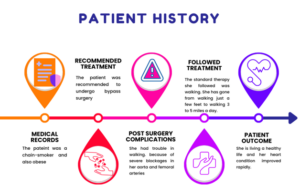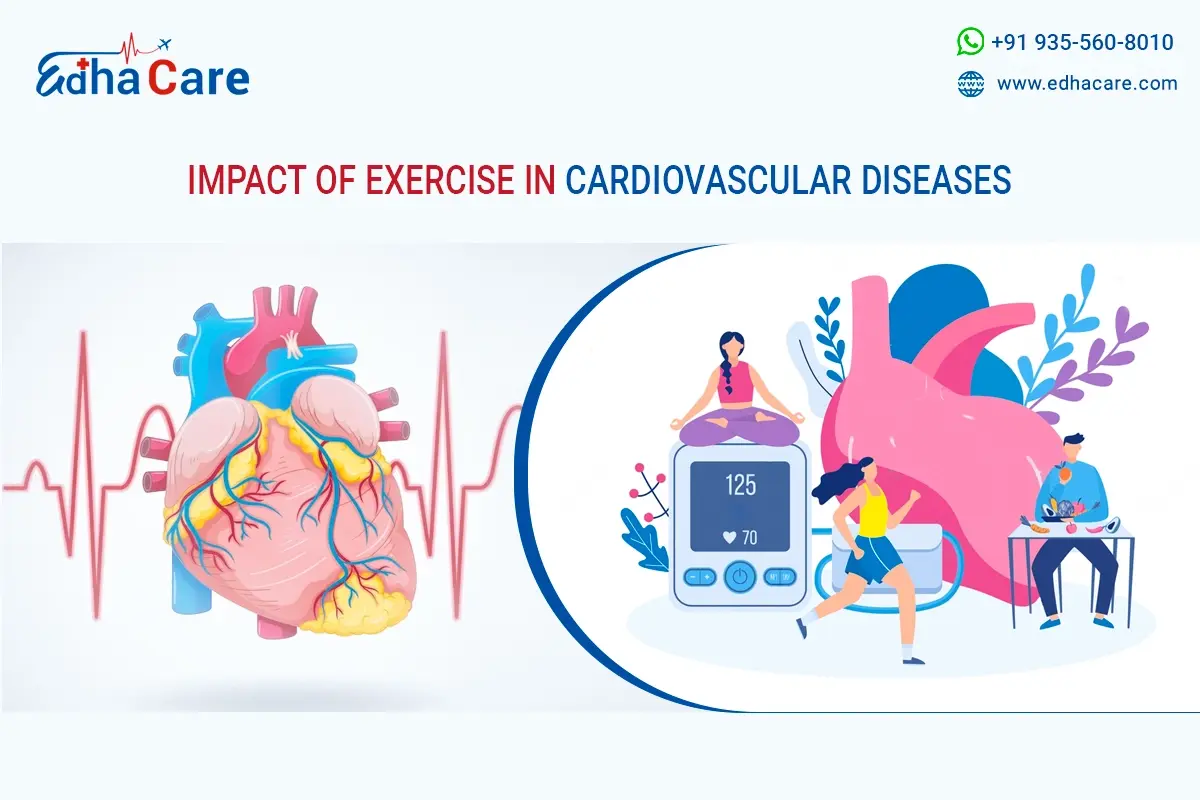It is commonly acknowledged that regular exercise has a significant positive impact on cardiovascular health. Regular exercise is strongly linked to a lower risk of acquiring cardiovascular diseases and cardiovascular death. Obesity is a problem that is prevalent today. Obesity is a complicated condition that affects the body’s entire metabolic process and is linked to a higher risk of both type 2 diabetes (T2D) and cardiovascular disease (CVD). Exercise has a number of positive health effects and is a crucial weapon in the fight against obesity and its associated co-morbidities, such as cardiovascular diseases. Numerous studies over many years have demonstrated the primary and secondary benefits of regular exercise in preventing conditions like cardiovascular diseases (CVDs), hypertension, obesity, diabetes, and early mortality. Regular physical exercise has several beneficial effects on overall health.
Advantages of Exercise on CVD
1. Hypertension
People today have high blood pressure as a result of a number of factors, including co-morbid conditions and work-related stress. Aerobic exercise and moderate-to-vigorous strength training can lower systolic and diastolic blood pressure by two to five mm Hg in normotensive people and by five to seven mm Hg in people with HTN. The duration, frequency, and intensity of PA, however, all affect the outcomes. Regular aerobic exercise lowers resting blood pressure via a number of processes, including reduced sympathetic activity, among others.
2. Coronary Artery Disease
Regular exercise can help reduce the risk factors associated with coronary artery disease (CAD), such as hyperlipidemia and HTN. Additionally, exercise can improve coronary arterial function, slowing the development and progression of CAD. It indicates that exercising moderately for five to six hours per week can lead to a reduction in coronary plaques.
3. Diabetes Mellitus
In patients with pre-diabetes and DM2, resistance, and aerobic activities can optimize insulin responsiveness, lower adipose tissue, particularly visceral abdominal fat, and encourage weight loss. Exercise can prevent metabolic syndrome and be used as a treatment for DM2 patients, lowering the burden of CVD. By increasing insulin sensitivity and activity in peripheral tissues, particularly in adipose tissue, skeletal muscle, and the liver, resistance and aerobic training improves glycemic management. Patients with greater baseline insulin resistance and those who exercise more frequently show the biggest improvements.
How much exercise and how often?
The general guidelines state that a combination of aerobic exercise and resistance training is particularly done for basic exercise. One should get in a minimum of 30 minutes of aerobic exercise such as walking, cycling, or swimming at least five days a week. Additionally, moderate weightlifting can be done to tone muscles and build muscle endurance twice a week, or frequently enough to cover the major muscle groups.
Recommended Guidelines for Exercise
- According to the researchers, this study backs up recent World Health Organization (WHO) recommendations that people engage in 150 to 300 minutes of moderate to strenuous aerobic exercise per week.
- The American Heart Association (AHA) advises engaging in at least 150 minutes of moderate-intensity activity, 75 minutes of strenuous exercise, or a combination of the two, each week.
- Along with regular exercise, maintaining a healthy weight, eating a balanced diet, reducing stress, and quitting smoking all lower the chance of developing heart disease.
Exercise Types That Boost Heart Health
1. Aerobic Exercise
What it does: According to Stewart, aerobic activity increases circulation, which lowers blood pressure and heart rate. Additionally, it improves your cardiac output (how well your heart pumps) and your total aerobic fitness, as determined, for instance, by a treadmill test. Additionally, aerobic activity lowers your risk of developing type 2 diabetes and aids in blood glucose management if you already have the disease.
Duration of Exercise: Ideally, at least 30 minutes a day, at least five days a week.
Examples: Brisk walking, running, swimming, cycling, playing tennis, and jumping rope. There is also another kind named heart-pumping aerobic exercise. It is the kind that doctors have in mind when they recommend at least 150 minutes per week of moderate activity.
2. Stretching and Flexibility
What they do: Stretching and other flexibility exercises don’t immediately improve heart health. They promote musculoskeletal health, allowing you to maintain flexibility and avoid joint pain, cramping, and other muscular problems. Maintaining strength training and aerobic activity requires a high level of flexibility.
Duration of Exercise: Every day and before and after another exercise.
Examples: Basic stretches at home, or doing exercise with the help of a specialist.
3. Resistance Training
What it does: Resistance exercise has a more focused impact on body composition. It can assist people who have a lot of body fat to lose weight and build leaner muscle mass, especially if they have a large belly, which increases the risk of heart disease. According to research, combining weight training with aerobic exercise may help increase HDL (good) cholesterol and decrease LDL (bad) cholesterol.
Duration of Exercise: At least two nonconsecutive days per week of resistance training is a good rule of thumb.
Examples: Working out with free weights (such as hand weights, dumbbells or barbells), on weight machines, with resistance bands or through body-resistance exercises, such as push-ups, squats and chin-ups.
PATIENT STORY
There are many patients worldwide who benefit from exercise. There was this patient who was diagnosed with peripheral artery disease, or PAD.
The whole patient description is shown below:

The above patient’s story justifies that heart conditions can be improved by doing exercise. Performing exercise or yoga can do wonders in improving cardiac health greatly. Several previous studies have investigated the effects of diet and exercise, independently or in combination, on cardiovascular health and have determined that it induces weight loss, lowers plasma triglycerides, plasma glucose, HDL levels, and blood pressure, and makes the heart healthy.
Conclusion
The rate of obesity-related cardiovascular diseases is rapidly increasing and often associated with additional co-morbidities including type 2 diabetes. Exercise reduces cardiovascular risk factors, and this reduction in risk factors is independent of changes to body weight or incidence of type 2 diabetes. There is still a huge proportion of people suffering from cardiovascular diseases who are not indulged in physical exercise despite knowing its benefits. Mortality risk reduction appears with even small bouts of daily exercise and peaks at 50–60 min of vigorous exercise each day. Exercise has numerous benefits on cardiovascular health.

